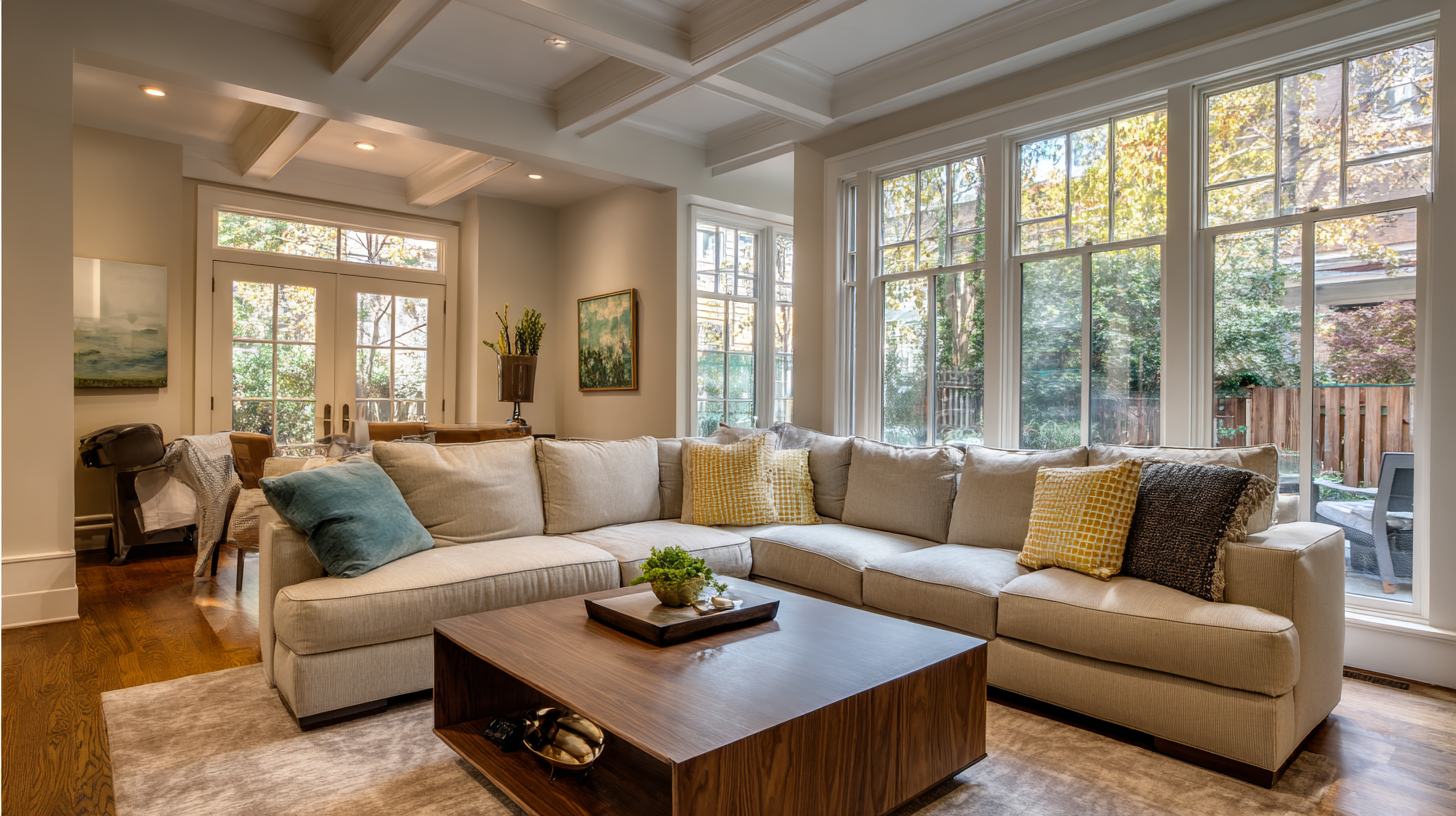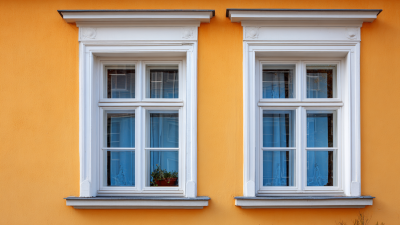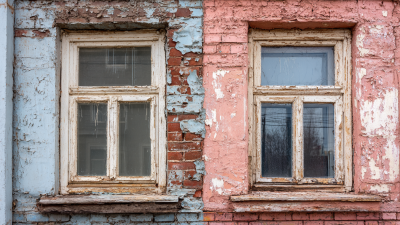Understanding the Costs: A Comprehensive Guide to Accurate Window Replacement Estimates
When contemplating home renovations, particularly regarding window replacements, understanding the associated costs is crucial for homeowners. A window replacement estimate not only informs decision-making but also helps homeowners gauge the value of their investment. According to the "Remodeling 2023 Cost vs. Value Report," homeowners can expect to recoup approximately 70% of their window replacement costs upon selling their homes, underscoring the financial benefits of such renovations. The National Association of Realtors further emphasizes that energy-efficient windows can save homeowners up to 15% on their heating and cooling bills, presenting a dual advantage of cost savings and improved property value. By accurately assessing the variables involved in window replacement estimates—including materials, labor, and potential energy savings—homeowners can make informed choices that align with their budget and long-term goals, making it essential to delve deeper into the cost components and potential returns of window replacements.

Understanding Different Types of Window Replacement Estimates: A Breakdown of Costs and Methods
When considering window replacement, understanding the various types of estimates available is crucial for homeowners and builders alike. Typically, estimates can be categorized into three primary types: ballpark estimates, detailed estimates, and unit cost estimates. According to the National Association of Home Builders (NAHB), ballpark estimates provide a quick overview, often giving a rough total based on square footage without detailed breakdowns. This method is beneficial for initial budgeting, but homeowners should be cautious as these estimates can vary significantly based on materials and labor costs.
Detailed estimates, on the other hand, offer a line-item breakdown that includes specific materials, labor, and any additional fees. A report by Remodeling Magazine found that the average cost for window replacement projects can range from $300 to $1,500 per window depending on the type, with energy-efficient models typically on the higher end of the spectrum. Unit cost estimates, which calculate costs based on the number of windows being replaced, are especially useful for larger projects. By multiplying the per-window cost by the total number of windows, homeowners can better predict their overall expenses, leading to more informed financial decisions.
Factors Influencing Window Replacement Costs: Materials, Styles, and Installation Techniques
When considering window replacement, several factors significantly influence the overall costs, including materials, styles, and installation techniques. The choice of materials, such as vinyl, wood, or fiberglass, can dramatically affect the price point. While vinyl windows are generally more affordable and low-maintenance, wood windows offer aesthetics and insulation but come at a higher cost. It's crucial to weigh the long-term benefits against the upfront investment.
Style also plays a pivotal role in replacement costs. Options like double-hung, casement, or bay windows differ not only in appearance but also in installation complexity and price. For instance, bay windows, while striking, often require additional structural support, increasing labor costs.
**Tips: Ensure to get multiple quotes from contractors for a clearer picture of installation costs. It's also wise to consider energy-efficient options, as they can save money on utility bills over time. Lastly, don't overlook the importance of proper installation; an experienced installer can prevent future issues, ultimately reducing long-term costs.**

Estimating Labor Costs: Understanding the Impact of Professional vs. DIY Installation
When considering window replacement, understanding labor costs is essential as they significantly impact the overall budget. According to data from the National Association of Home Builders (NAHB), professional installation can account for 30% to 50% of the total window replacement expense. This emphasizes the importance of factorizing labor into any comprehensive estimate.
Choosing DIY installation might seem like a cost-saving solution, with estimates suggesting homeowners could save anywhere from $30 to $50 per hour on labor. However, without prior experience, the risks associated with incorrect installation can outweigh the savings. A report from the U.S. Department of Energy highlights that improper window installation can lead to energy loss, increasing heating and cooling costs by up to 20%. Thus, while DIY can be appealing for budget-conscious homeowners, weighing the potential long-term costs against immediate savings is crucial for informed decision-making.
Understanding Labor Costs for Window Replacement: Professional vs. DIY
Regional Cost Variations: How Geographic Location Affects Window Replacement Prices
Geographic location plays a crucial role in determining window replacement costs, as prices can vary significantly across different regions. Urban areas typically experience higher labor costs and materials prices due to demand and living expenses. Conversely, rural locations may offer lower costs, but homeowners must be aware of limited availability of specialized services and materials. This regional variation is reflective of broader economic trends, as seen in the Anthropic Economic Index, which highlights uneven geographic benefits in various economic sectors.
**Tips:** When seeking window replacement estimates, research local contractors and obtain multiple quotes to compare prices tailored to your region. Consider the timing of your project; scheduling during off-peak seasons can sometimes yield better rates. Additionally, be mindful of the specific window materials favored in your area, as regional climate conditions often affect cost and performance expectations.
Understanding these localized factors can aid homeowners in making informed decisions, ensuring they receive accurate estimates tailored to their specific circumstances. For a more competitive edge, leverage any available financial incentives for energy-efficient window replacements, which are becoming increasingly prevalent as part of the push towards renewable energy solutions.
Understanding the Costs: A Comprehensive Guide to Accurate Window Replacement Estimates
| Region | Average Cost per Window | Labor Cost | Material Type | Average Installation Time |
|---|---|---|---|---|
| Northeast | $600 | $200 | Vinyl | 4-6 hours |
| Midwest | $550 | $180 | Wood | 3-5 hours |
| South | $500 | $150 | Aluminum | 2-4 hours |
| West | $700 | $230 | Fiberglass | 5-7 hours |
The Importance of Accurate Measurements: Ensuring Fit and Optimal Cost Estimates for Window Replacement
Accurate measurements play a crucial role in the window replacement industry, as they directly influence both fit and cost estimates. Recent reports indicate that the currently trending sensor market is valued at approximately $200 billion and is projected to grow at a CAGR of 10% over the next five years. Such growth signifies the increasing importance of precise measurement tools, including Hall effect sensors and resistance sensors, which are pivotal in ensuring that window dimensions are accurately conveyed. This precision helps contractors to avoid costly mistakes, aligning with the overarching need for efficiency in the building trades.
Furthermore, the implementation of both open-loop and closed-loop current sensing systems can greatly enhance the accuracy of measurements taken during window replacements. These technological advancements enable a more reliable data collection process, mitigating risks associated with estimation errors. For instance, a recent study showed that improper measurements could inflate costs by up to 30%, reinforcing the necessity for homeowners and contractors to prioritize detailed and accurate assessments. By leveraging such technologies, industry professionals can optimize their project budgets while ensuring the long-term satisfaction of their clients.

Related Posts
-

7 Tricks for Accurate Window Replacement Cost Estimator That Buyers Must Know
-

A Comprehensive Guide to Understanding Window Installation Costs Across Different Regions
-

How to Accurately Estimate Your Window Installation Cost Before You Buy
-

How to Accurately Calculate Your Window Replacement Estimate for Maximum Cost Efficiency
-

What is the Perfect Window Style for My House? A Guide to Your Options
-

How to Choose Retrofit Windows for Energy Efficiency and Cost Savings
